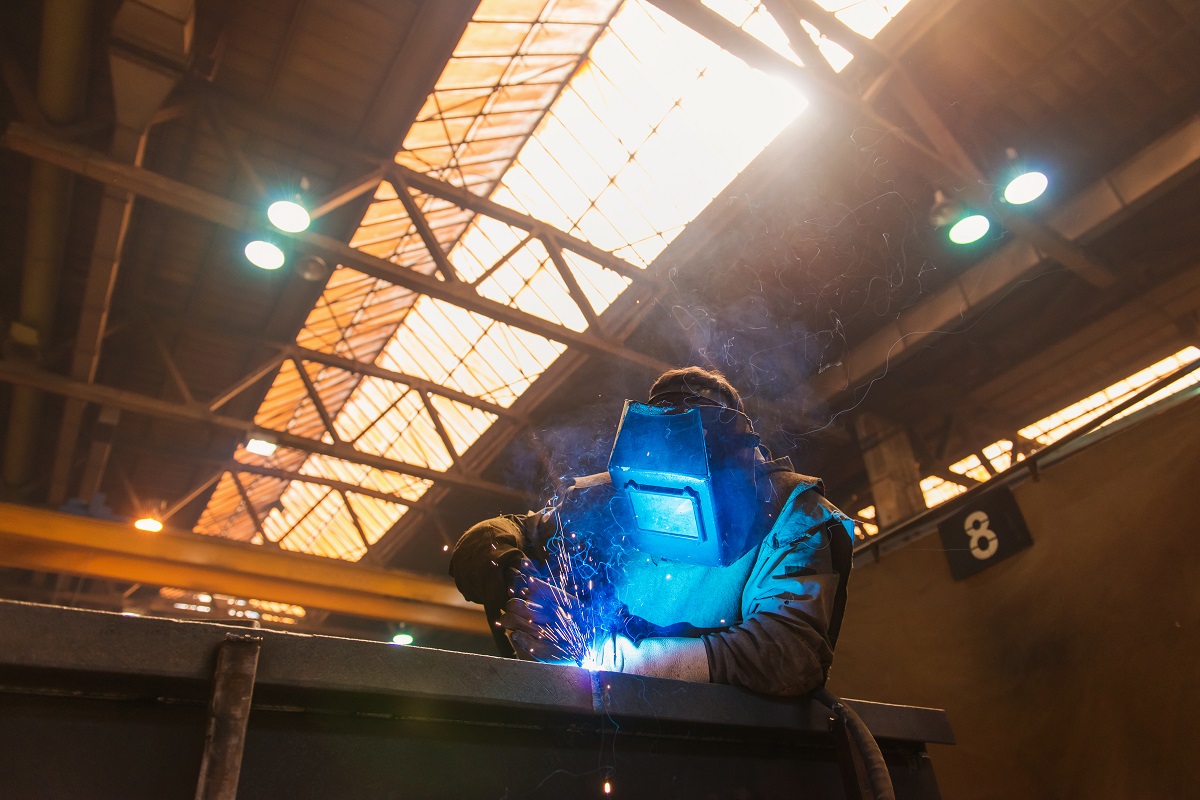Expert Methods for Preventing Weld Undercut Efficiently
Expert Methods for Preventing Weld Undercut Efficiently
Blog Article
Comprehending the Causes and Solutions for Undercut Welding in Steel Fabrication Processes
In the realm of metal manufacture procedures, the event of undercut welding positions a considerable obstacle that requires a comprehensive understanding of its causes and practical options. The detailed interaction of numerous factors during welding operations can result in this unfavorable phenomenon, affecting the structural stability and general high quality of the bonded joints - Preventing weld undercut. By exploring the origin triggers of undercut welding and exploring efficient restorative procedures, makers can elevate the criterion of their handiwork and guarantee the manufacturing of perfect metal components
Typical Sources Of Undercut Welding
Regularly ignored in steel manufacture, undercut welding takes place due to different factors that require careful focus and competence to be successfully minimized. Furthermore, improper welding techniques, such as utilizing the incorrect welding angle or travel rate, can likewise contribute to damage development. The selection of welding parameters, such as voltage, present, and wire feed rate, plays a significant role in the incident of undercut welding.
Influence of Incorrect Welding Parameters
Inaccurate welding specifications can substantially endanger the honesty and high quality of welded joints in metal manufacture processes. The impact of incorrect welding criteria shows up in numerous means, bring about architectural weaknesses and defects in the bonded parts. One essential aspect affected by inappropriate welding criteria is the infiltration depth of the weld. Insufficient warm input as a result of low welding currents or exceedingly high traveling rates can lead to poor fusion between the base metals, causing incomplete joint penetration and weakened bonds. Alternatively, excessive heat input triggered by high welding currents or slow traveling rates can result in too much and burn-through support, producing a weak and unpredictable weld structure. Additionally, incorrect parameters such as inappropriate voltage setups or incorrect electrode angles can add to erratic weld bead accounts, lack of fusion, and increased possibilities of issues like damaging. For that reason, thorough attention to welding parameters is paramount to make sure the production of high-quality welds with the preferred mechanical residential or commercial properties and architectural stability.
Impact of Improper Lantern Angle
Inappropriate torch angle in welding procedures can dramatically influence the quality and integrity of the last weld joints in metal manufacture processes. The torch angle plays a crucial duty in determining the heat input and distribution throughout welding. When the torch angle is inaccurate, issues such as damaging can develop. Damaging is an usual welding defect where a groove develops along the weld toe, deteriorating the joint and jeopardizing its architectural integrity.
A torch angle that is as well steep can cause inadequate infiltration, insufficient blend, and boosted see this site spatter. On the various other hand, a lantern angle that is too shallow can result in excessive penetration, burn-through, and distortion of the base product. Preventing weld undercut. Appropriate lantern angle is crucial for ensuring consistent weld quality, strength, and appearance
To stop undercutting and various other defects triggered by inappropriate lantern angles, welders need to be trained to keep the proper lantern angle throughout the welding process. Routine surveillance and adjustment of lantern angles throughout welding can aid accomplish sound welds with marginal defects.
Role of Inadequate Welding Methods

Another facet of inadequate welding strategies is incorrect weld prep work. Poor cleansing of the base metals, incorrect joint design, or insufficient edge prep work can all add to damage welding. Moreover, insufficient securing gas protection or using the wrong sort of gas can cause incomplete blend and the formation of undercut issues.
To resolve the duty of insufficient welding methods in steel manufacture processes, it is crucial to give detailed training for welders. Correct education and learning on welding specifications, joint prep work, and protecting gas choice can aid stop undercut welding and ensure high-quality welds in steel construction jobs.
Efficient Solutions for Undercut Welding
Attending to undercut welding in steel manufacture calls for carrying out efficient services to improve weld quality and architectural stability. Among the primary options to battle undercut is to adjust welding specifications such as voltage, current, and travel speed to make certain correct warm input and fusion. By fine-tuning these setups, welders can avoid excessive melting of the base metal and filler product, lowering the visit this website likelihood of undercut formation.
In addition, proper joint preparation is crucial in preventing undercut. Making sure tidy base metal surfaces cost-free of contaminants and utilizing the suitable bevel angle can help promote far better weld penetration and reduce the threat of undercut - Preventing weld undercut. Employing suitable welding methods, such as oscillating the torch or weaving, can additionally help in distributing heat uniformly and filling up the weld joint appropriately, minimizing the opportunity of undercut defects
Furthermore, selecting the proper welding consumables, including electrodes and filler metals, is necessary in reducing undercut. Utilizing materials with suitable chemical compositions and mechanical properties can add to achieving sound welds with minimal undercut. Normal evaluation and quality assurance procedures should also be implemented to spot and address undercut issues immediately, making sure the general honesty of produced metal components.

Verdict
To conclude, recognizing the reasons and remedies for undercut welding in metal construction procedures is vital for attaining top quality welds. By attending to common reasons such as wrong welding criteria, inappropriate torch angle, and poor welding techniques, welders can avoid undercutting and make sure solid, resilient welds. It is vital to focus on these aspects and execute effective remedies to boost the total welding process and end product high quality.

Report this page